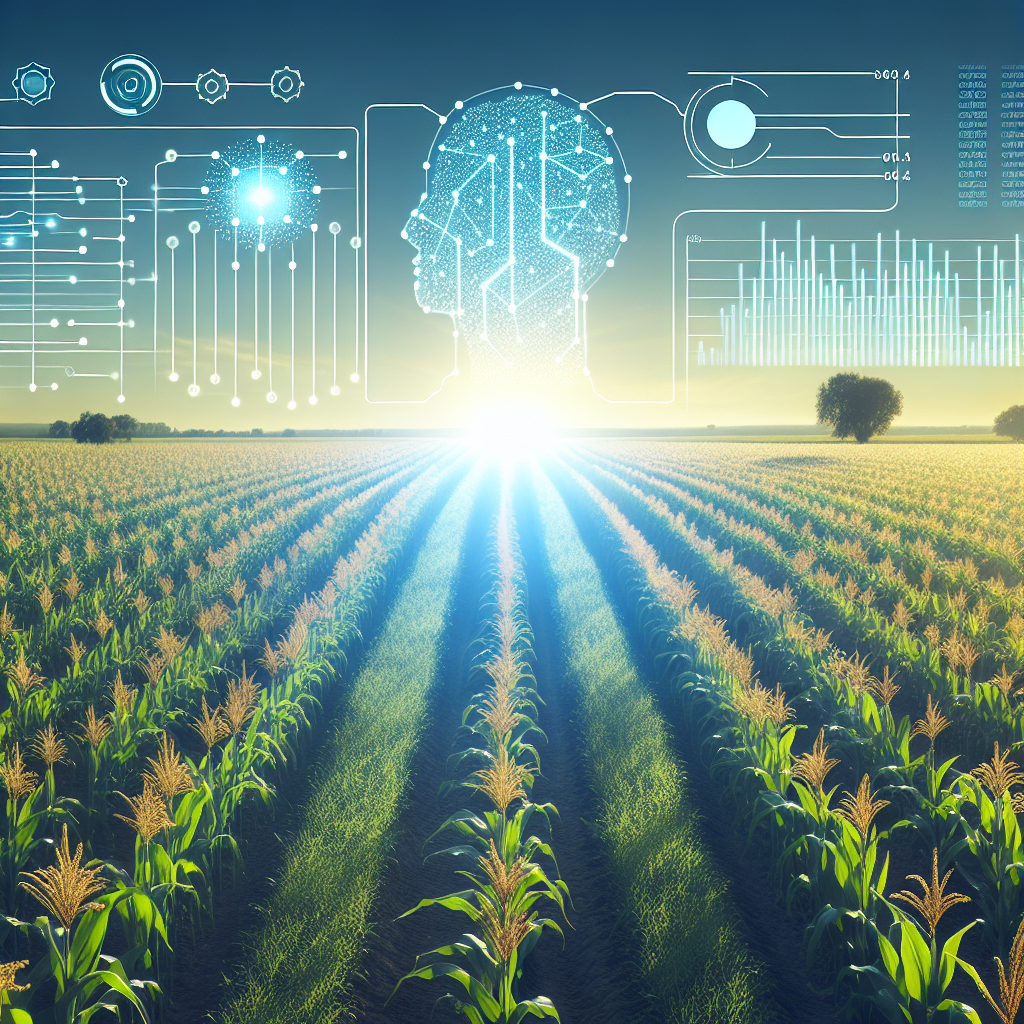In recent years, the agriculture industry has seen a significant shift towards the use of technology to improve crop monitoring and increase productivity. One of the most exciting developments in this field is the use of machine learning algorithms to analyze data and provide valuable insights for farmers. In this article, we will explore how machine learning is being used for crop monitoring, the benefits it offers, and some frequently asked questions about this technology.
What is Machine Learning?
Machine learning is a subset of artificial intelligence that involves the development of algorithms that can learn from and make predictions or decisions based on data. These algorithms are designed to identify patterns in data and use them to make informed decisions without being explicitly programmed to do so.
In the context of crop monitoring, machine learning algorithms can analyze data collected from various sources such as satellites, drones, weather stations, and sensors to provide valuable insights for farmers. These insights can help farmers make more informed decisions about planting, watering, fertilizing, and harvesting crops, ultimately leading to increased yields and reduced costs.
How is Machine Learning Used for Crop Monitoring?
There are several ways in which machine learning is being used for crop monitoring:
1. Predictive analytics: Machine learning algorithms can analyze historical data on crop yields, weather patterns, soil conditions, and other factors to predict future crop yields. This information can help farmers plan their planting and harvesting schedules more effectively.
2. Disease detection: Machine learning algorithms can analyze images of crops taken by drones or satellites to detect signs of disease or pest infestations. Early detection of these issues can help farmers take timely action to prevent the spread of disease and minimize crop losses.
3. Weed detection: Machine learning algorithms can analyze images of fields to identify and classify weeds. This information can help farmers target specific areas for weed control, reducing the need for herbicides and saving time and money.
4. Soil analysis: Machine learning algorithms can analyze soil samples to provide insights into soil health, nutrient levels, and pH levels. This information can help farmers make informed decisions about fertilization and soil management practices.
5. Irrigation optimization: Machine learning algorithms can analyze data on soil moisture levels, weather conditions, and crop water requirements to optimize irrigation schedules. This can help farmers conserve water, reduce costs, and improve crop yields.
What are the Benefits of Using Machine Learning for Crop Monitoring?
There are several benefits to using machine learning for crop monitoring:
1. Increased productivity: By providing farmers with valuable insights into crop health, soil conditions, and weather patterns, machine learning can help farmers optimize their farming practices and increase crop yields.
2. Cost savings: Machine learning can help farmers reduce the use of inputs such as water, fertilizers, and pesticides by providing targeted recommendations for crop management. This can lead to cost savings and reduced environmental impact.
3. Timely decision-making: Machine learning algorithms can analyze data in real-time, allowing farmers to make timely decisions about planting, irrigation, fertilization, and pest control. This can help farmers respond quickly to changing conditions and minimize crop losses.
4. Sustainability: By optimizing farming practices, machine learning can help farmers reduce their environmental impact and promote sustainable agriculture. This can lead to healthier soils, cleaner water, and more resilient ecosystems.
5. Scalability: Machine learning algorithms can be applied to large datasets and across multiple fields, making them suitable for large-scale farming operations. This scalability allows farmers to monitor crops more effectively and make data-driven decisions on a larger scale.
Frequently Asked Questions about Using Machine Learning for Crop Monitoring
Q: How accurate are machine learning algorithms for crop monitoring?
A: Machine learning algorithms can achieve high levels of accuracy in crop monitoring, depending on the quality of the data and the complexity of the algorithms used. By training algorithms on large datasets and continuously refining them, farmers can improve the accuracy of predictions and recommendations.
Q: What types of data are used for crop monitoring with machine learning?
A: Machine learning algorithms can analyze a wide range of data sources, including satellite imagery, drone footage, weather data, soil samples, and sensor data. By combining multiple sources of data, farmers can gain a more comprehensive understanding of their crops and make more informed decisions.
Q: How can farmers implement machine learning for crop monitoring?
A: Farmers can implement machine learning for crop monitoring by working with technology providers who offer solutions tailored to agriculture. These providers can help farmers collect and analyze data, train machine learning algorithms, and integrate insights into their farming practices.
Q: Are there any limitations to using machine learning for crop monitoring?
A: While machine learning offers many benefits for crop monitoring, there are some limitations to consider. For example, machine learning algorithms require large amounts of data to train effectively, and they may not always be able to account for all factors that affect crop growth. Additionally, the cost of implementing machine learning solutions can be a barrier for some farmers.
Q: What is the future of machine learning in agriculture?
A: The future of machine learning in agriculture is bright, with continued advancements in technology and increased adoption by farmers. As machine learning algorithms become more sophisticated and data collection methods improve, farmers can expect to see even greater benefits in terms of productivity, sustainability, and profitability.
In conclusion, machine learning is revolutionizing crop monitoring in agriculture, offering farmers valuable insights into crop health, soil conditions, and weather patterns. By leveraging the power of machine learning algorithms, farmers can optimize their farming practices, increase productivity, and promote sustainability. As technology continues to evolve, the future of machine learning in agriculture looks promising, with continued advancements and increased adoption by farmers around the world.

